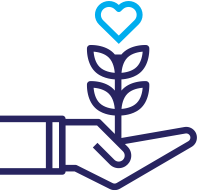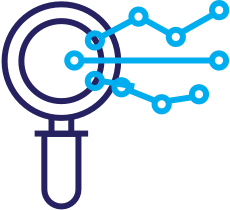The Paycheck Protection Program (PPP) is a key section within the recently passed Coronavirus Aid, Relief and Economic Security Act (CARES) Act that allocates $349 billion for small businesses (< 500 employees) loans to support payroll and certain other expenses. Loans are available for up to 2.5 times of your average monthly payroll during the year preceding the application, with a maximum loan of $10 million.
Existing client?
Not an Aquina client and need access to capital in days not weeks?
Let us assist with your finances. Whether you’re looking to upgrade equipment, add new technology or simply improve cash flow, Aquina can provide a customized financial solution to help you grow your business.
Get Started
Simple
Taking the challenges out of healthcare finances through a smooth and stress-free process.

Trusted
Established, secure, & accredited business with 100% focus on healthcare organizations.

Complete
Full service, providing practice & patient finance under one house.
What is the Paycheck Protection Program?
The Paycheck Protection Program (PPP) is a key section within the recently passed Coronavirus Aid, Relief and Economic Security Act (CARES) Act that allocates $349 billion for small businesses (< 500 employees) loans to support payroll and certain other expenses. Loans are available for up to 2.5 times of your average monthly payroll during the year preceding the application, with a maximum loan of $10 million. If employers maintain their payroll and use loan funds for allowed expenses like payroll, rent, and utilities for the first 8 weeks after the loan is issued, the loan amount is forgiven. The PPP is retroactive to February 15, 2020.
Is my business eligible?
The following small businesses that were operational as of February 15, 2020, are eligible for PPP loans:
How much funding can I access?
The maximum loan you can access is 250% of your average monthly payroll during the year preceding the application, up to $10 million. Seasonal business expenses will be measured using a 12-week period beginning February 15, 2019, or March 1, 2019, whichever the seasonal employer chooses.
How can I use a PPP loan?
You can use the loan to fund payroll costs, employee salaries, costs related to the continuation of group healthcare benefits during paid leave (sick, family or medical), insurance premiums, mortgage interest payments, rent, utilities and interest on any other debt obligation incurred before February 15, 2020.
When can I apply?
What information do I need to provide to apply?
Most applicants will need:
Do I need to pledge any collateral for these loans?
No collateral is required.
Do I need to personally guarantee this loan?
No, there is no personal guarantee requirement. However, if the proceeds are used for fraudulent purposes, the U.S. government will pursue criminal charges against you.
Do I need to first look for other funds before applying to this program?
No, the SBA is waiving the requirement that you try to obtain some or all of the loan funds from other sources (i.e., Credit Elsewhere requirement).
Can I get a PPP loan if I have other SBA loans?
Borrowers may apply for PPP loans and other SBA financial assistance, including Economic Injury Disaster Loans (EIDLs), 7(a) loans, 504 loans, and microloans and also receive investment capital from Small Business Investment Corporations (SBICs). However, you cannot use your PPP loan for the same purpose as your other SBA loan(s). For example, if you use your PPP to cover payroll for the 8-week covered period, you cannot use a different SBA loan product for payroll for those same costs in that period, although you could use it for payroll not during that period or for different workers.
Can I also apply for an Economic Injury Disaster Loan (EIDL) under the act?
Yes. The act likewise expands access to SBA’s economic injury disaster loans (EIDL) program to businesses with fewer than 500 employees. The same affiliation issues described above apply. Eligible businesses that suffer substantial economic injury as a result of a disaster or emergency, which now includes COVID-19, can apply for a loan under this program between January 31, 2020, and December 31, 2020. No personal guarantee is required for EIDLs under $200,000, and the loan can be made solely upon the applicant’s credit score. Initial advances of up to $10,000 can be issued within three days and need not be repaid. The loan will bear a low rate of interest; however, unlike PPP 7(a) loans, the act does not provide for forgiveness for EIDLs. Businesses may receive both PPP loans and EIDLs, so long as both loans are not used for the same purpose or otherwise duplicative.
Can I get more than one PPP loan?
Each Taxpayer Identification Number is only eligible for one PPP loan.
How long will this program last?
Although the program is open until June 30, 2020, we encourage you to apply as quickly as you can because there is a limited amount of funds available, and the program is first-come-first-served.
Will my PPP loan be forgiven?
Yes, the loan amounts will be forgiven as long as:
How much of my PPP can be forgiven?
The amount of your loan that is forgiven is equal to the amount you spend during the 8 weeks following loan origination toward eligible expenses, including:
Can the amount forgiven be reduced?
The amount of loan forgiveness is reduced if there is a reduction in the number of employees or a reduction of more than 25% in wages paid to employees. Reductions in the number of employees or compensation occurring between February 15, 2020, and April 26, 2020, will generally be ignored if the action (layoff or salary reduction) is reversed by June 30, 2020.
How can I request loan forgiveness?
You can submit a request to the lender that is servicing the loan by providing:
If my loan amount covers 2.5x my monthly payroll and other costs, but only eight weeks of those expenses are forgivable, will I owe the remainder back to the lender?
Yes, the act allows for maximum forgiveness of 8 weeks of approved costs. The remainder will be treated as a loan. Remember that the approved costs subject to forgiveness are broader than just payroll, and also include mortgage interest, rent, and utilities.
What is my interest rate?
Loans through PPP have a fixed interest rate of 1%.
When do I need to start paying interest on my loan?
All payments (principal, interest, and fees) are deferred for 6 months; however, interest will continue to accrue over this period.
When is my loan due?
The loan is due in 2 years, but you can repay early without any prepayment penalties or fees.
What interest expenses are considered eligible?
Any business-related interest payments on a mortgage or other debt obligation (excluding any prepayment or principal obligation) that was incurred before February 15, 2020.
What rent expenses are considered eligible?
Payments for business-related rent under a leasing agreement that was in force before February 15, 2020.
What utility expenses are considered eligible?
Payments for business-related utilities (for the distribution of electricity, gas, water, transportation, telephone, or internet access) for which service began before February 15, 2020.
What counts as payroll costs?
Payroll costs include:
Are any payroll costs excluded?
Yes, the following payroll costs are excluded:
Do independent contractors count as employees for purposes of PPP loan calculations?
No, independent contractors have the ability to apply for a PPP loan on their own so they do not count for purposes of a borrower’s PPP loan calculation.
What is the maximum recoverable salary for each employee?
For any employee whose salary is $100,000 or more, only $8,333 per month can be included in the calculation of average monthly payroll costs, in addition to that employee’s cost of health and retirement benefits and state and local taxes prorated for the covered period.
How can PPP loans be used?
In addition to the approved uses for a Section 7(a) loan made in the ordinary course, a PPP loan may, for the period from February 15, 2020, to June 30, 2020, be used for the following: